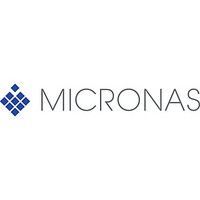MAS3587F Micronas, MAS3587F Datasheet - Page 14

MAS3587F
Manufacturer Part Number
MAS3587F
Description
MPEG Layer 3 Audio Encoder/Decoder
Manufacturer
Micronas
Datasheet
1.MAS3587F.pdf
(83 pages)
Available stocks
Company
Part Number
Manufacturer
Quantity
Price
Company:
Part Number:
MAS3587F-QI-B2
Manufacturer:
INTEL
Quantity:
101
MAS 3587F
2.11. Interfaces
The MAS 3587F uses an I
lel I/O interface (PIO) for MPEG bit streams and digital
audio interfaces for the incomming/outgoing audio
data (I
output interfaces can be used. MPEG bit stream input
to the decoder is also possible via a second serial
input interface.
2.11.1. I
For controlling and program download purposes, a
standard I
description of all functions can be found in Section 3.
2.11.2. S/PDIF Input Interface
The S/PDIF interface receives a one-wire serial bus
signal. In addition to the signal input pin SPDI1/SPDI2,
a reference pin SPDIR is provided to support balanced
signal sources or twisted pair transmission lines.
The synchronization time on the input signal is
< 50 ms.
The SPDIF input signal can also be switched to the
SPDO pin. In this case the analog input circuit of the
SPDIF inputs (see Fig. 4–16 on page 57) restores the
SPDIF input signal to a full swing signal at SPDO.
For controlling details please refer to Table 3–7 on
page 34.
2.11.3. S/PDIF Output
The S/PDIF output of the baseband audio signals is
provided at pin SPDO.
Note that the S/PDIF output is available only for
MPEG 1 sampling frequencies (32, 44.1, 48 kHz).
2.11.4. Multiline Serial Audio Input (SDI, SDIB)
There are two multiline serial audio input interfaces
(SDI, SDIB) each consisting of the three pins SIC, SII,
SID, and SIBC, SIBI, SIBD. The firmware supports SDI
for audio signals and SDIB for bitstream signals.
The interfaces can be configured as continuous bit
stream or word-oriented inputs. For the MPEG bit-
streams the word strobe pin SIBI must always be con-
nected to V
by the encoder. During enabling the DSP and its inter-
faces, it is strongly recommended to hold the SIBC Pin
low.
14
2
S or similar). Alternatively, SPDIF input and
2
C Control Interface
2
C slave interface is implemented. A detailed
SS
, bits must be sent MSB first as created
2
C control interface, a paral-
In case of the Demand Mode in decoding applications
(see Section 2.8.), the signal clock coming from the
data source must be higher than the nominal data
transmission rate (e.g. 128 kbit/s). Pin EOD is used to
interrupt the data flow whenever the input buffer of the
MAS 3587F is filled.
For controlling details please refer to Table 3–7 on
page 34.
2.11.5. Multiline Serial Output (SDO)
The serial audio output interface of the MAS 3587F is
a standard I
lines SOD, the word strobe SOI and the clock signal
SOC. It is possible to choose between two standard
interface configurations (16-bit data words with word
strobe time offset or 32-bit data words with inverted
SOI-signal).
If the serial output generates 32 bits per audio sample,
only the first 20 bits will carry valid audio data. The
12 trailing bits are set to zero by default.
2.11.6. Parallel Input/Output Interface (PIO)
The parallel interface of the MAS 3587F consists of the
8 data lines PI12...PI19 (MSB) and the control lines
PCS, PR, PRTR, PRTW, and EOD. It can be used for
data exchange with an external memory and for other
special purposes as defined by the DSP software.
The PIO interface is always used for MPEG-data out-
put. For the handshake protocol please refer to
Section 4.6.3.7.
For MPEG-data input, the PIO interface is activated by
setting bits 9,8 in D0:7f1 to 01. For the handshake pro-
tocol please refer to Section 4.6.3.6.
2
S-like interface consisting of the data
ADVANCE INFORMATION
Micronas













